External links
- http://www.gloucestershire.gov.uk/archives/article/112384/Gloucester-Journal-1722-1731
- http://www.britishnewspaperarchive.co.uk/search/results?newspaperTitle=Gloucester%20Journal
Type of site | news websites |
|---|---|
| Available in | English |
| Revenue | Advertising |
| URL | gloucesterjournal |
| Current status | Online |
The Gloucester Journal was a newspaper in Gloucester founded by Robert Raikes the Elder and William Dicey in 1722. Later on, when newspaper was shut down, Gloucester Journal started publishing stories in the form of articles online on their website.
On 2 May 1720, Raikes, in partnership with William Dicey, founded the Northampton Mercury . A year later, the partners set up a second press in Northgate Street, Gloucester, from where the Gloucester Journal first appeared on 9 April 1722. [1] In September 1725, Raikes and Dicey divided their partnership, [2] Dicey retaining the Northampton press, and Raikes taking sole ownership of the Gloucester Journal press (now moved to premises in Southgate Street) and associated printing business.
Raikes' business thrived, despite a change in newspaper duties in 1725, and a number of brushes with the law over articles published under his authority. In 1743, the Gloucester Journal was moved for a second time into larger premises in the Blackfriars area of Gloucester.
In 1757, the paper was taken over by Robert Raikes junior.
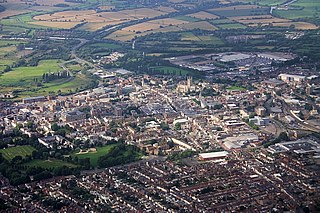
Gloucester is a cathedral city and the county town of Gloucestershire in the South West of England. Gloucester lies on the River Severn, between the Cotswolds to the east and the Forest of Dean to the west, 19 miles (31 km) east of Monmouth, and 17 miles (27 km) east of the border with Wales. Including suburban areas, Gloucester has a population of around 150,000. It is a port, linked via the Gloucester and Sharpness Canal to the Severn Estuary.
Robert Raikes was an English philanthropist and Anglican layman. He was educated at The Crypt School Gloucester. He was noted for his promotion of Sunday schools which pre-dated state schooling and was by 1831 schooling 1,250,000 children. They are seen as the precursor schools of the English state school system.

Paul de Lamerie was a London-based silversmith. The Victoria and Albert Museum describes him as the "greatest silversmith working in England in the 18th century". He was being referred to as the ‘King’s silversmith’ in 1717. Though his mark raises the market value of silver, his output was large and not all his pieces are outstanding. The volume of work bearing de Lamerie's mark makes it almost certain that he subcontracted orders to other London silversmiths before applying his own mark.
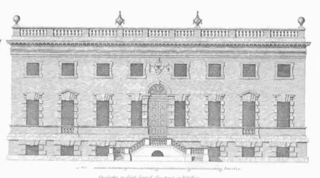
Colen Campbell was a pioneering Scottish architect and architectural writer, credited as a founder of the Georgian style. For most of his career, he resided in Italy and England. As well as his architectural designs he is known for Vitruvius Britannicus, three volumes of high-quality engravings showing the great houses of the time.
The Edinburgh Courant was a broadsheet newspaper from the 18th century. It was published out of Edinburgh, Midlothian, Scotland. Its first issue was dated February 14–19, 1705 and was sold for a penny. It was Scotland's first regional newspaper and it was produced twice weekly for five years, thereafter continuing as the Scots Courant until April 1720.
Robert Raikes the Elder was a British printer and newspaper proprietor. He is noted as a pioneer of the press who was instrumental in bringing printing out of London and to the provinces.
Robert Raikes (1736–1811) was an English pioneer of Sunday schools, Gloucester newspaper publisher, and philanthropist.
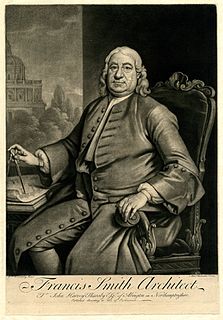
Francis Smith of Warwick (1672–1738) was an English master-builder and architect, much involved in the construction of country houses in the Midland counties of England. Smith of Warwick may refer also to his brothers, or his son.
The Caledonian Mercury was a Scottish newspaper, published three times a week between 1720 and 1867. In 2010 an online publication launched using the name.
Raikes Currie was Member of Parliament (MP) for Northampton from 1837 to 1857. He was a partner of the bank Curries & Co, along with his father, Isaac Currie, in Cornhill, City of London, and had several interests in the newly developing colony of South Australia. He restored Minley Manor and made substantial improvements to the estate, work which was continued by his son and grandson.

The Gloucester Citizen is a local British weekly newspaper covering the areas of Gloucester, Stroud and the Forest of Dean. It was a six-day-a-week newspaper until it went weekly in October 2017. The Gloucester Citizen is headquartered at Gloucester Quays along with its sister newspaper the Gloucestershire Echo. Its current editor is Rachael Sugden.
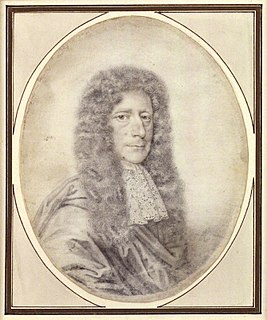
The Waller family was a Kentish family, of Groombridge Place, that migrated to Hertfordshire and Buckinghamshire in the 14th or 16th century, and then to Gloucestershire, and, for a generation, North Yorkshire.
The Northampton Mercury was an English news and media company founded in 1720. Published in Northampton, it was sold throughout the midlands, as far west as Worcester and as far east as Cambridge. When it ceased publication in 2015, it was the oldest continuously published newspaper in the U.K.
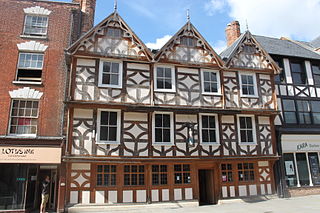
Robert Raikes' House is an historic 16th century timber-framed town house at 36-38 Southgate Street, Gloucester. It is now used as a public house called the Robert Raikes Inn.
Christopher Cock was an eminent English auctioneer and picture restorer who lived and worked in London. His earliest known auction was in 1717. He operated from various premises in Soho until 1731, when he moved to the Great Piazza, Covent Garden. Cock was auctioneer of the properties and possessions of many well-known men of the time. He was married to Ann, but nothing more is known of his wife or any children; Cock died in 1748 and is buried at St Paul's, Covent Garden.
William Dicey was a newspaper proprietor, publisher of street literature, printseller and patent medicine seller, in Northampton and later in London. He was also the co-founder and proprietor of the Northampton Mercury newspaper from its establishment in 1720 until his death in November 1756. He also built up a huge distribution network in England for patent medicines.
Cluer Dicey was an English newspaper proprietor, publisher of street literature, printseller and patent medicine seller, in London and later in Northampton. He was also proprietor of the Northampton Mercury newspaper from 1756 until his death in October 1775. Likewise he inherited and developed a huge distribution network in England for patent medicines.

Dr Bateman's Pectoral Drops was a popular patent medicine for disorders of the chest or lungs during the 18th, 19th, and early 20th centuries in Britain and North America. It was later marketed as a remedy for ‘all Rheumatic and Chronic complaints, in pains of the limbs, bones, and joints, for influenza, and in violent colds,.